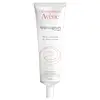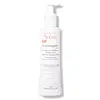What's inside
What's inside
 Key Ingredients
Key Ingredients

No key ingredients
 Benefits
Benefits

 Concerns
Concerns

 Ingredients Side-by-side
Ingredients Side-by-side

Water
Skin ConditioningCaprylic/Capric Triglyceride
MaskingPropylene Glycol Dicaprylate/Dicaprate
EmollientPentaerythrityl Tetracaprylate/Tetracaprate
EmollientGlycerin
HumectantGlyceryl Stearate
EmollientButylene Glycol
HumectantCetearyl Alcohol
EmollientStearic Acid
CleansingButyrospermum Parkii Butter
Skin ConditioningDimethicone
EmollientAmmonium Acryloyldimethyltaurate/Vp Copolymer
Benzoic Acid
MaskingCeteareth-33
CleansingDextran Sulfate
Skin ConditioningDimethiconol
EmollientDisodium EDTA
Hesperidin Methyl Chalcone
AntioxidantPhenoxyethanol
PreservativeRuscus Aculeatus Root Extract
AstringentSodium Hydroxide
BufferingTocopheryl Acetate
AntioxidantWater, Caprylic/Capric Triglyceride, Propylene Glycol Dicaprylate/Dicaprate, Pentaerythrityl Tetracaprylate/Tetracaprate, Glycerin, Glyceryl Stearate, Butylene Glycol, Cetearyl Alcohol, Stearic Acid, Butyrospermum Parkii Butter, Dimethicone, Ammonium Acryloyldimethyltaurate/Vp Copolymer, Benzoic Acid, Ceteareth-33, Dextran Sulfate, Dimethiconol, Disodium EDTA, Hesperidin Methyl Chalcone, Phenoxyethanol, Ruscus Aculeatus Root Extract, Sodium Hydroxide, Tocopheryl Acetate
Water
Skin ConditioningC12-15 Alkyl Benzoate
AntimicrobialCaprylic/Capric Triglyceride
MaskingPoloxamer 188
Emulsifying4-T-Butylcyclohexanol
MaskingAcrylates/C10-30 Alkyl Acrylate Crosspolymer
Emulsion StabilisingBenzoic Acid
MaskingC12-20 Alkyl Glucoside
EmulsifyingC14-22 Alcohols
Emulsion StabilisingCarbomer
Emulsion StabilisingChlorphenesin
AntimicrobialDisodium EDTA
Octyldodecanol
EmollientPongamia Glabra Seed Oil
Skin ConditioningSodium Hydroxide
Buffering
 Reviews
Reviews

Alternatives
Ingredients Explained
These ingredients are found in both products.
Ingredients higher up in an ingredient list are typically present in a larger amount.
Benzoic Acid is used to preserve and adjust the pH of products.
The antimicrobial property of Benzoic Acid helps elongate a product's shelf life. Its main role is to reduce fungi growth and is not found to be effective at fighting bacteria. Therefore Benzoic Acid is always added along with other preservatives.
In its pure form, Benzoic Acid looks like a white crystalline solid. It has slight solubility in water.
The name of Benzoic Acid comes from gum benzoin, which used to be the sole source of deriving this ingredient. Benzoic Acid is the most simple aromatic carboxylic acid.
Benzoic Acid is naturally occuring in strawberries, mustard, cinnamon, and cloves. It has a slight scent but is not considered to be a fragrance.
Learn more about Benzoic AcidThis ingredient is an emollient, solvent, and texture enhancer. It is considered a skin-softener by helping the skin prevent moisture loss.
It helps thicken a product's formula and makes it easier to spread by dissolving clumping compounds.
Caprylic Triglyceride is made by combining glycerin with coconut oil, forming a clear liquid.
While there is an assumption Caprylic Triglyceride can clog pores due to it being derived from coconut oil, there is no research supporting this.
Learn more about Caprylic/Capric TriglycerideDisodium EDTA plays a role in making products more stable by aiding other preservatives.
It is a chelating agent, meaning it neutralizes metal ions that may be found in a product.
Disodium EDTA is a salt of edetic acid and is found to be safe in cosmetic ingredients.
Learn more about Disodium EDTASodium Hydroxide is also known as lye or caustic soda. It is used to adjust the pH of products; many ingredients require a specific pH to be effective.
In small amounts, sodium hydroxide is considered safe to use. However, large amounts may cause chemical burns due to its high alkaline.
Your skin has a natural pH and acid mantle. This acid mantle helps prevent harmful bacteria from breaking through. The acid mantle also helps keep your skin hydrated.
"Alkaline" refers to a high pH level. A low pH level would be considered acidic.
Learn more about Sodium HydroxideWater. It's the most common cosmetic ingredient of all. You'll usually see it at the top of ingredient lists, meaning that it makes up the largest part of the product.
So why is it so popular? Water most often acts as a solvent - this means that it helps dissolve other ingredients into the formulation.
You'll also recognize water as that liquid we all need to stay alive. If you see this, drink a glass of water. Stay hydrated!
Learn more about Water